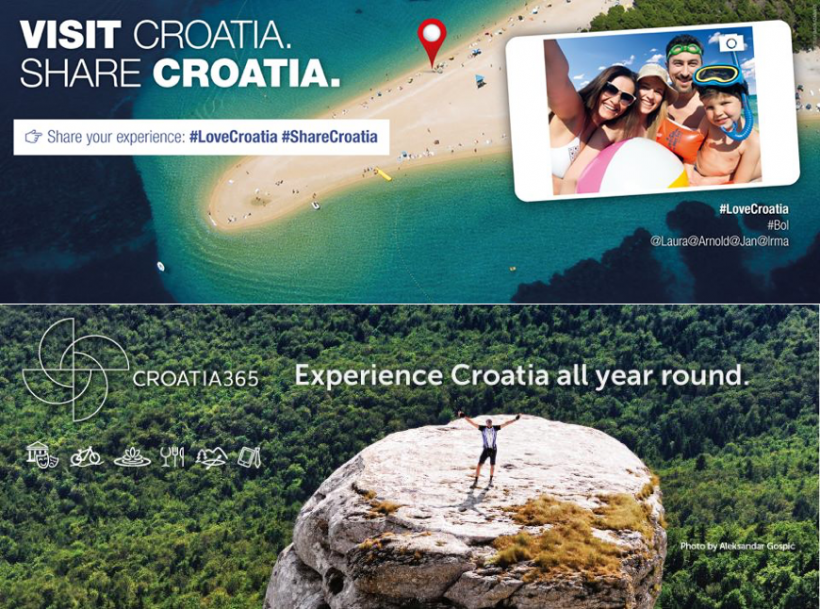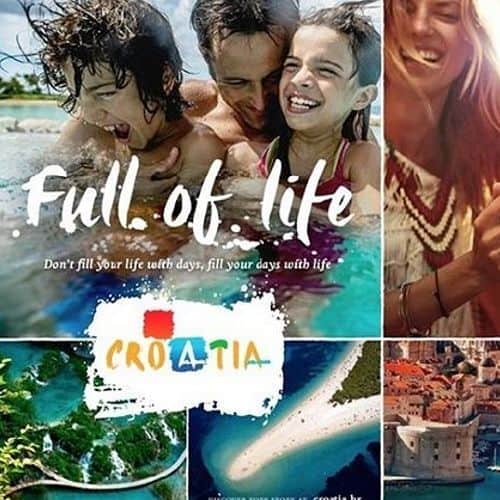Though the visual is well established in areas of study like anthropology, many other social science disciplines have been slow to incorporate images into their research. Visual research is rapidly growing in the social sciences, however the visual is still sidelined in areas such as research on nations and nationalism. If the visual is considered in this field it tends to be mentioned in passing rather than the main focus of the study. However the visual has become vastly important to the way the nation and identities are constructed. The images we use and consume in daily life are forms of visual communication that structure our social world and build our community.
Using the example of Croatian tourism advertisements I will show that, no matter how banal, images matter, even if we are not their intended target audience.
In 1995 Michael Billig wrote the now seminal work entitled Banal Nationalism. In this book Billig makes the argument that the solidarity of national identification came not out of times of war and national uprisings, but rather stemmed from consistent daily reminders and signifiers of the nation. We are subconsciously reminded of the nation when we read newspapers that identify an ‘us’ as national, when we pass statues of famous leaders on the street, use national currency, etc. Billig refers to these moments as the ‘unwaved’ flag where, as opposed to the intentionally waved flag of national mobilizations, the unwaved flag hanging outside of a building we pass everyday is banal and unnoticed. But this unwaved flag is essential in creating the solidarity necessary for members of the nation to wave the flag in moments of national uprisings.
What Billig’s argument shows us in this context is that the subconscious banal of daily life structures our social world, building identities and imagining communities. Images themselves play this role within the construction of social identities. For example Goffman (1979) demonstrates in his work on gender in mainstream advertisements, that the images around us simultaneously reinforce and create social stereotypes and norms. Advertising design strives to be easily digestible very quickly, you should see an image and immediately be able to understand what it is communicating. Therefore these images tend to be based on stereotypes.
The stereotypes are used in order to communicate the context of the advertisement quickly so that the viewer spends time on the product not the story that the advertisement is telling.
Through the use of idealized types, advertisements communicate something very specific about social roles, identities, and norms. Therefore what Goffman argues when he states that images are simultaneously supporting stereotypes and creating them is that they are drawing on preconceived notions of social norms at the same as individuals are consuming these images and using them to shape their conception of the social world. Thus the banal images and advertising that we see in daily life not only help to reinforce the national community, but they also influence the way we shape our understanding of ourselves and society. Even though these banal images have the potential to influence social identities, their perceived banality means that they are not always taken seriously. This was an issue I faced often in my research on tourism advertising in Croatian.
My PhD research focuses very narrowly on two small-scale tourism campaigns in Croatia (see Figure 1 for example). I analyzed these images through a standardized method of visual analysis. I also interviewed the design agencies that made these campaigns, tourism board representatives, well-known Croatian designers, and other members of the design and tourism industry in Croatia. I combined this data with over 20 interviews gathered from the Croatian public on the same theme. These interviews were all highly focused on only these two moderately funded tourism campaigns in a small European country. The question I was most often asked when doing this research was why. Participants, tourism officials, and even designers would continuously ask me why I was doing this research because they could not see why it mattered and why it was important. The project manager of the advertising agency that designed one of the campaigns in this research told me that by doing research on these campaigns I was “thinking too much” about them. For most respondents these images were just tourism advertisements; they were insignificant and unimportant in any wider context. They are just images indented for tourist and to increase tourist arrivals. These consumeristic aims and narrow representation combined with a disregard for the tourist experience and distrust of government initiatives discounted these images making participants feel the campaigns were insignificant. Therefore putting these images under close scrutiny was seen as unnecessary and a waste of my time. But images do matter.

These tourism advertisements form a large part of the national imagery that represents the nation to the world. Tourism advertisements help brand the nation to other governments, to investors, and international audiences (Arnczyk, 2013). On a global, political, and economic scale, the nation’s brand is vastly important. However, what is less researched is its importance internally. As a whole, these tourism advertisements contribute to a visual narrative of the nation that influences not only external perception of the nation but the internal imagination of the national community.
I argue that these tourism advertisements are part of Billig’s banal nationalism, forming part of the imagined image of the national community. National identity is complex, it varies by individual, and it changes over time. There is an ineffable quality about nations making them impossible to define, let alone visualize. The nation was often seen by participants as larger and greater than the individual experience, therefore when asked how they visualized the nation, interviewees did not draw on their banal experience in their daily lives. Instead the participants interviewed for this research drew on preexisting banal images that reproduced the nation. Most commonly, participants used tourism advertisements to inform the way the nation is visualized. For example when asked to visualize the nation one participant stated: “You know when you look at those tourist ads, and commercials? [laughs] Something like that”. It is obvious to assume that tourism advertisements are in some way influenced by the identity of the nation. However, here we see that tourism advertisements also form part of the continual construction and reconstruction of national identity.
Tourism advertisements are a cultural product that is not just influenced by national identity but it also influences national identity itself.

In 1997, du Gay created the image in Figure 2, the ‘circuit of culture’ (1997). This image suggests that identity, production, consumption, regulation, and representation of cultural products are all connected, influencing each other. Here representation can refer to the Croatian tourism advertisements and they are influenced by national identity but they are also influencing national identity. These tourism images are caught up in a web of influences. The reality of representation is, however, less direct and cyclical than a circuit might suggest. It might therefore be more appropriate to incorporate Edensor’s (2002) term ‘matrix’ here to emphasize the imbalances, irregularities, and multidirectionality of these processes. The connection between national identity and tourism advertisements is not only one way. However, whether a circuit or a matrix, tourism advertisements play an unintended role in influencing the way the nation is visualized by its members.
The Croatians interviewed in this research demonstrated how these tourism advertisements ‘matter’ on multiple levels. Though the intended audience for these images were the tourists, the effect of these advertisings as a form of representation beyond the target audience is inevitable. The main concern here is not that individuals are visualizing the nation in terms of tourism advertising, but that tourism advertising is created without any regard to the wider sustained messages they will send. Currently Croatian tourism advertisements are based on marketing data and increasing tourism profits.
The producers of these tourism images are ‘selling’ Croatia to the tourist, rather than ‘representing’ Croatia.
The images focus on tourist activities, the experience of tourism, and the tourists themselves. Croatia is just the backdrop of these advertisements, passive and insignificant. The tourism advertisements are not representing Croatia in any meaningful way, they are selling tourism to tourists. The question that comes up now is if tourism advertisements are caught up in this circuit of culture in which these tourism images influence national identity, what effect does this passive representation of the nation have?
Overall, my research shows that images are a form of visual communication that shapes identity and the social world. Images, no matter how seemingly insignificant, form part of this circuit of identity construction. I take the view that all images produced are important and significant. Every image produced makes up the visual narrative of identity. Even though tourism advertisements seemed inconsequential to any larger social system, they are part of the national imagining and are impossible to separate from the visualization of the nation. Images matter because, even if small or insignificant, their existence contributes to the way we view not just others but ourselves as well. Identity is intangible, inconsistent, and indefinable. Identity therefore is difficult to visualize and impossible to brand making it essential for social researcher to question the way identity is being visualized and how this visualization influences the reality of identities in the social world.
References:
Aronczyk, Melissa. 2013. Branding the Nation: The business of national identity. Oxford: Oxford University Press.
BILLIG, M. (1995). Banal nationalism.
du Gay, Paul. 1997. Doing cultural studies: the story of the Sony Walkman. London: Sage
Edensor, Tim. 2002. National Identity, Popular Culture and Everyday Life. New York: Berg.
Goffman, Erving. 1979. Gender Advertisements. London Macmillan.





